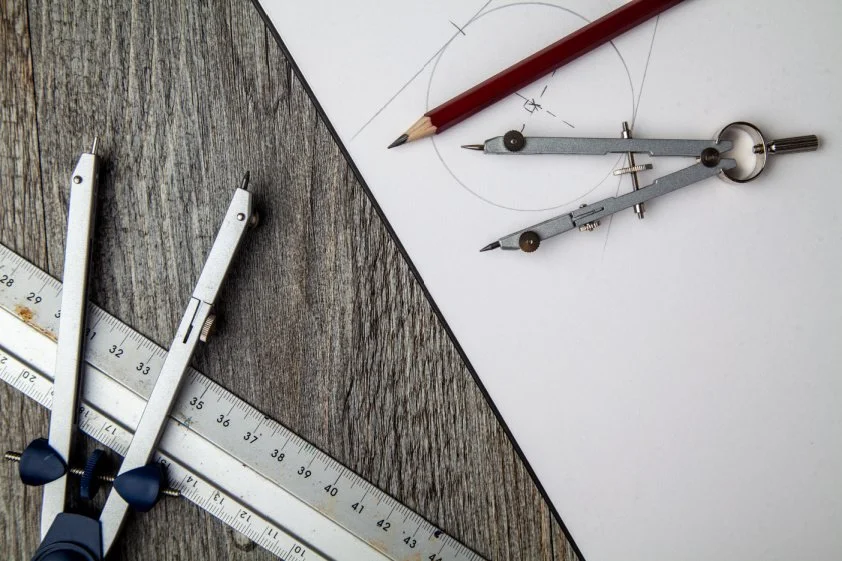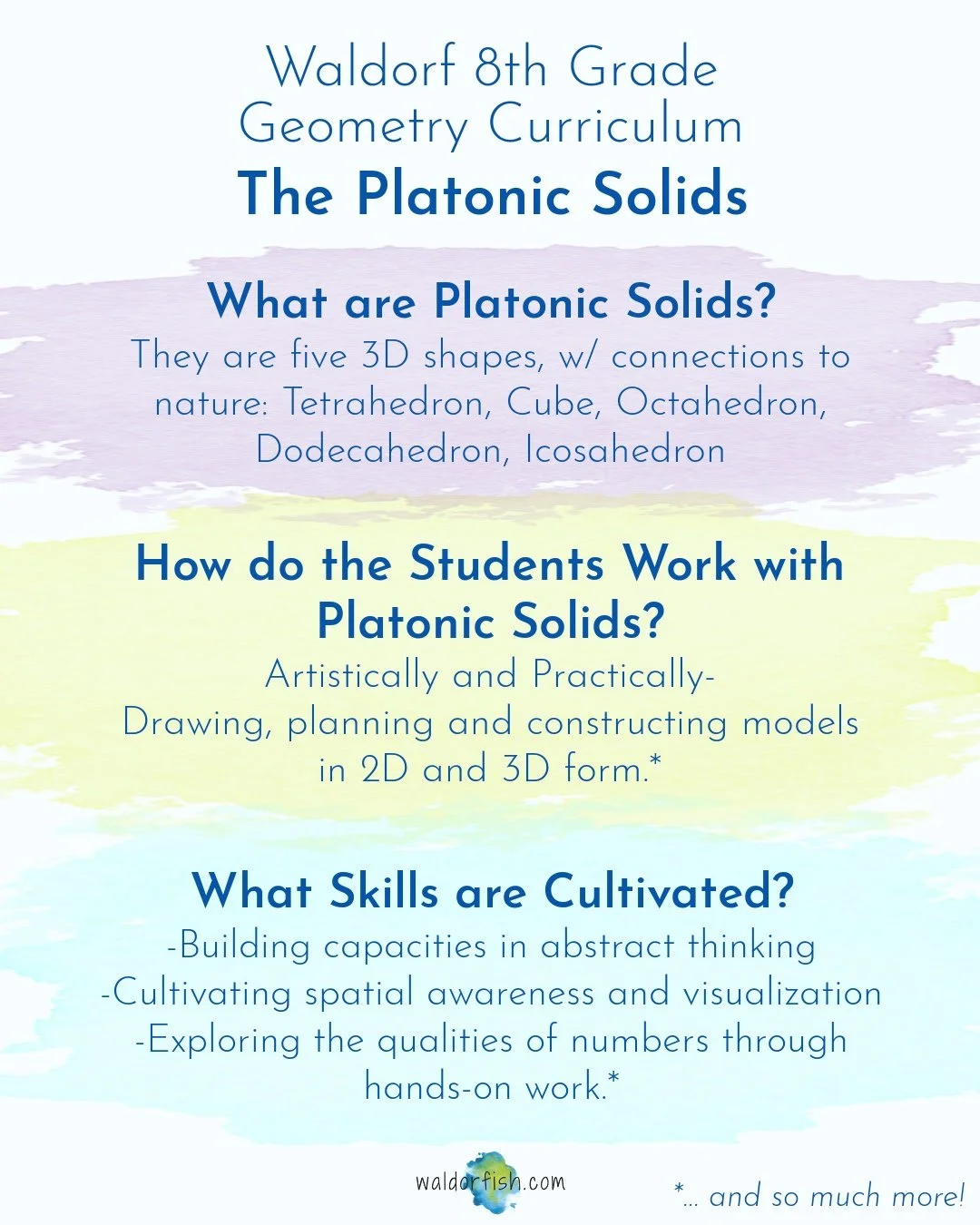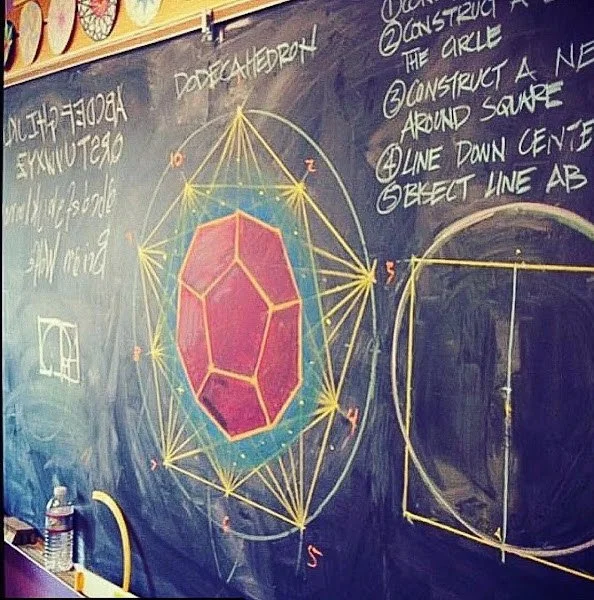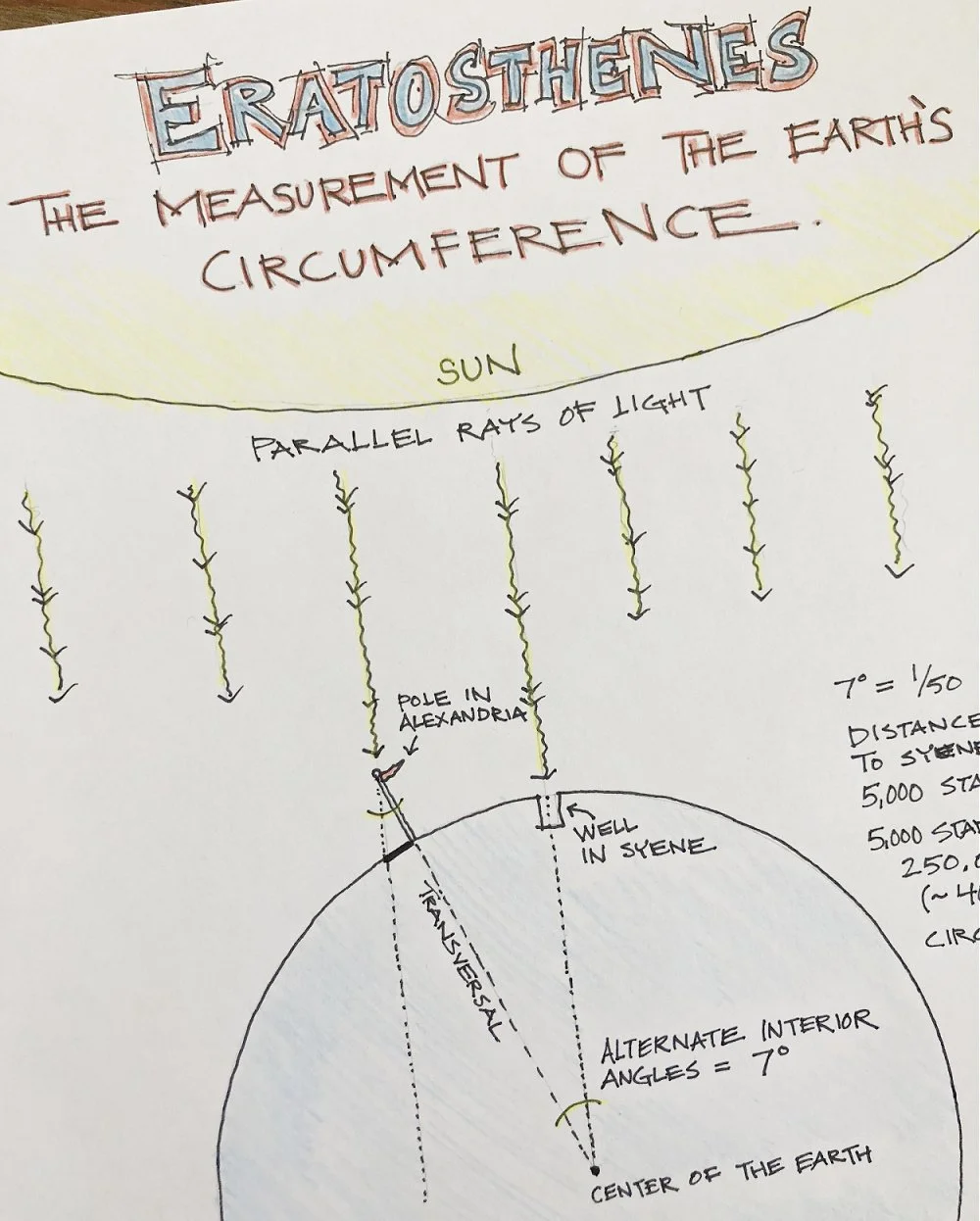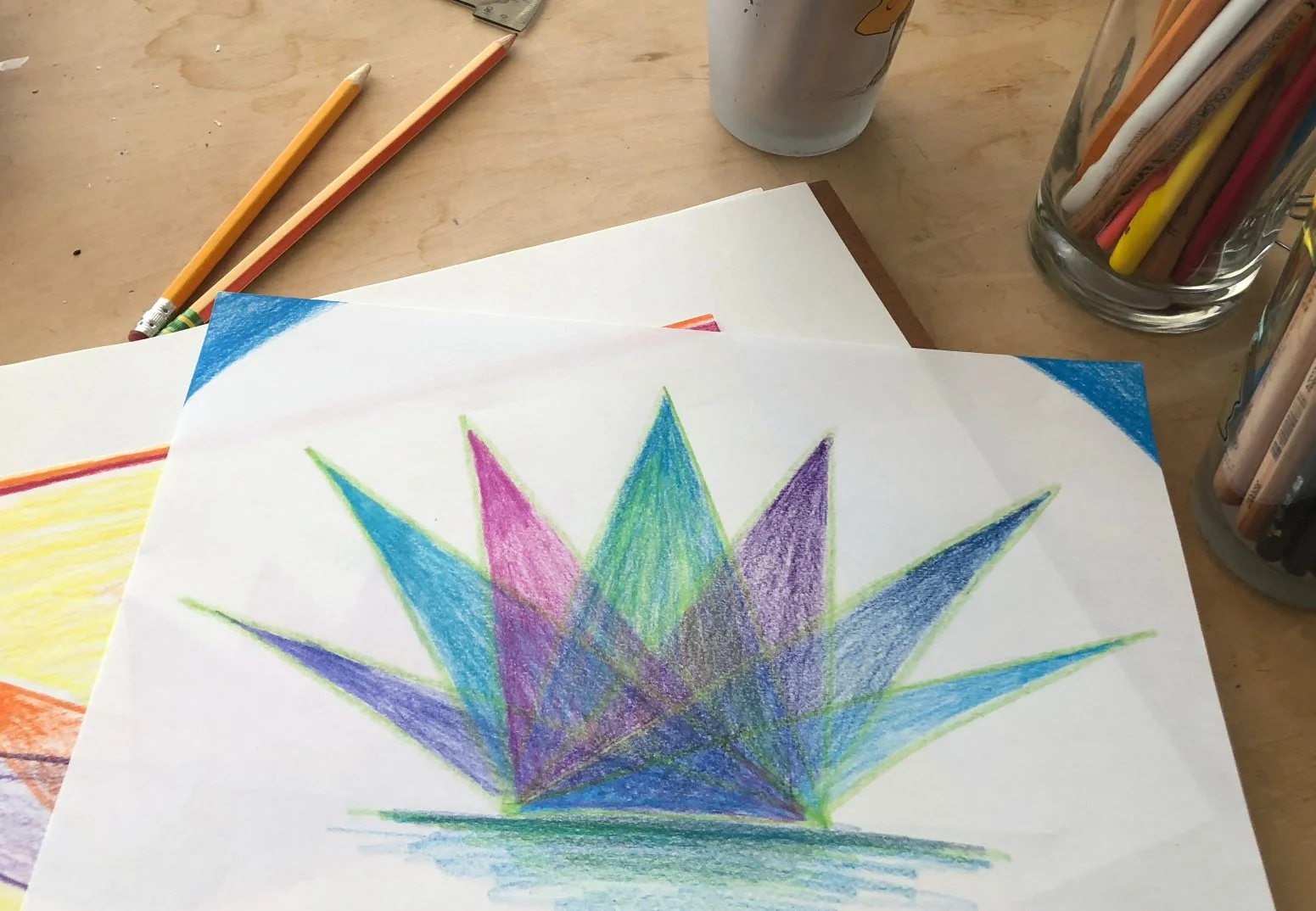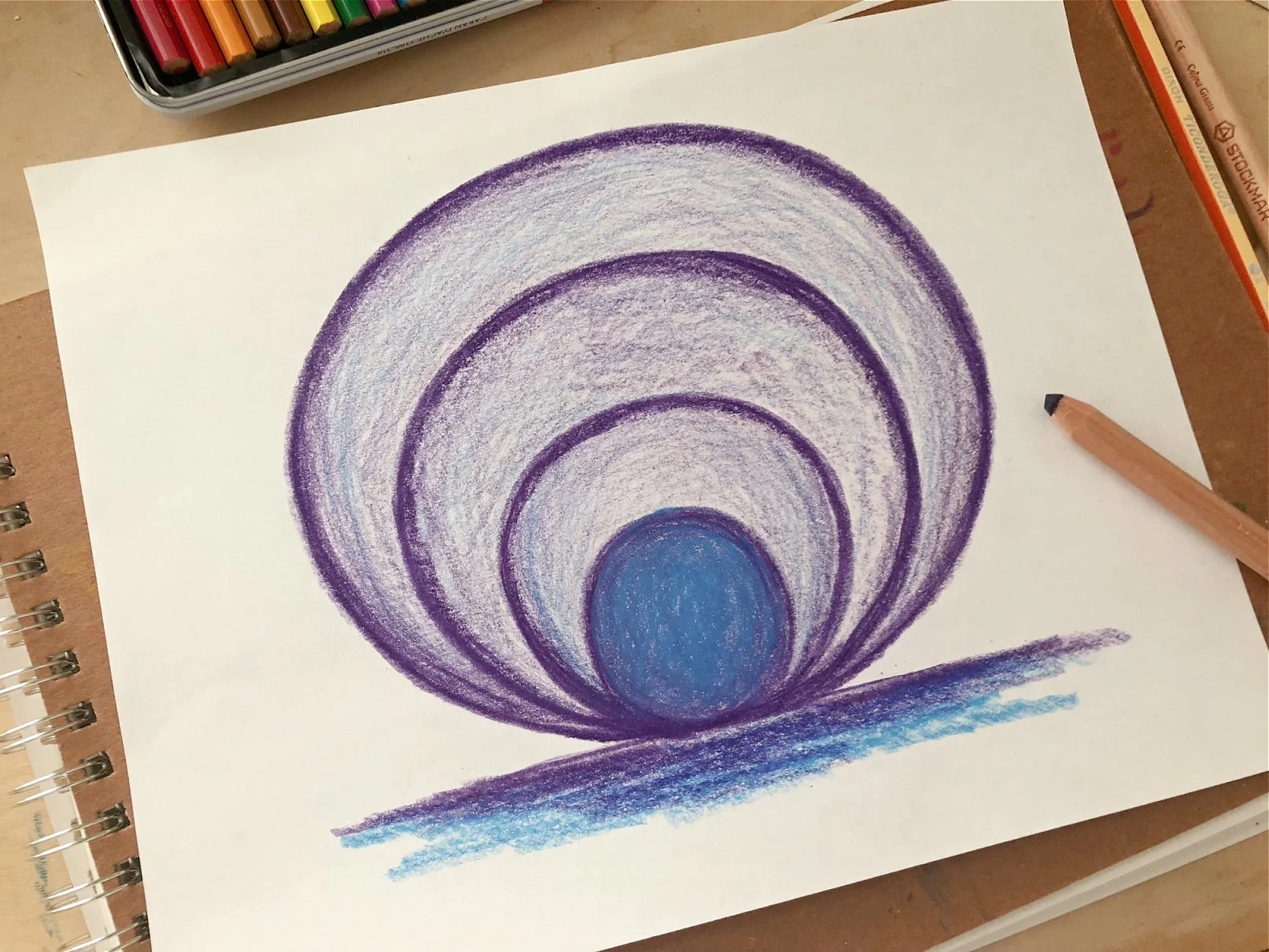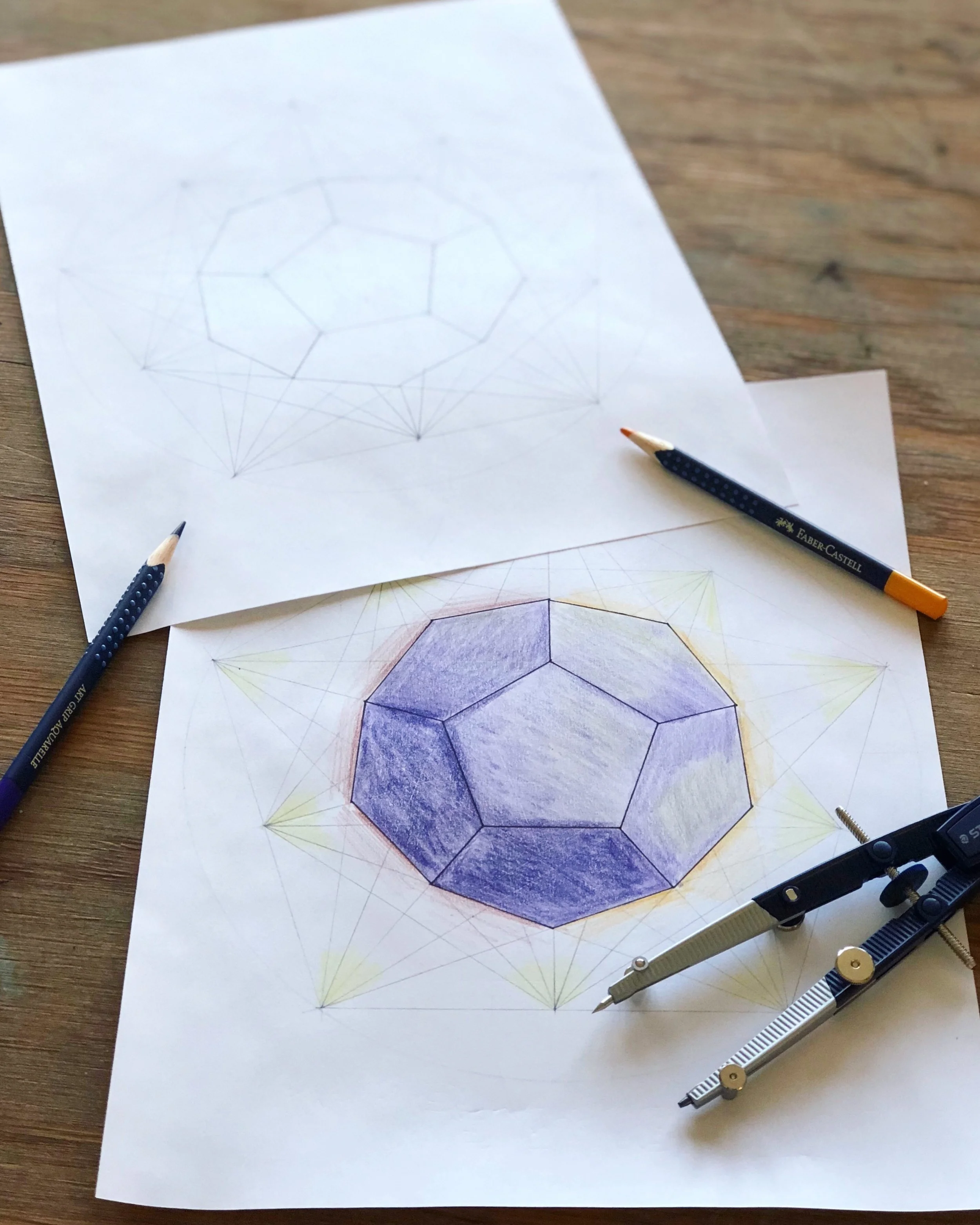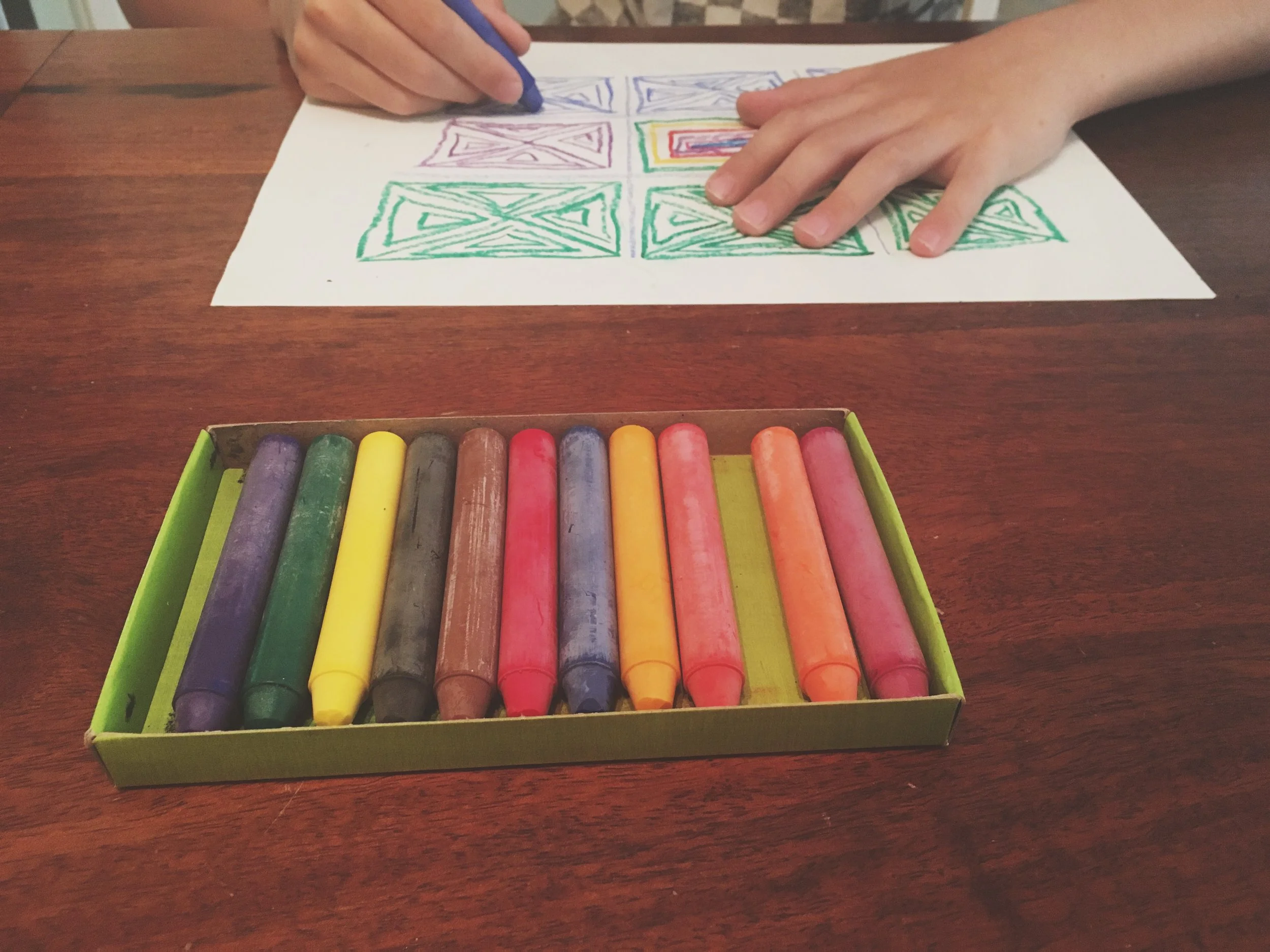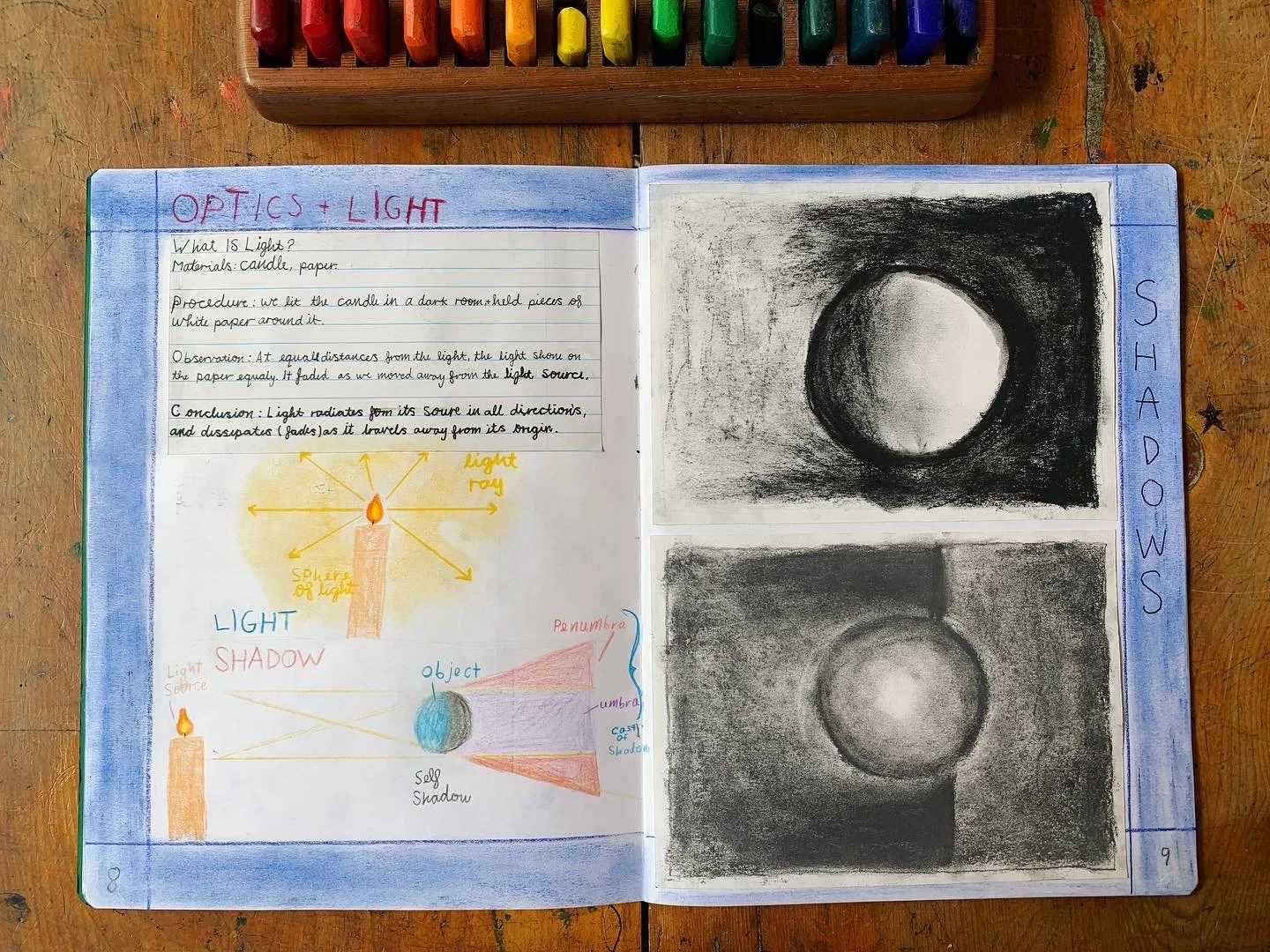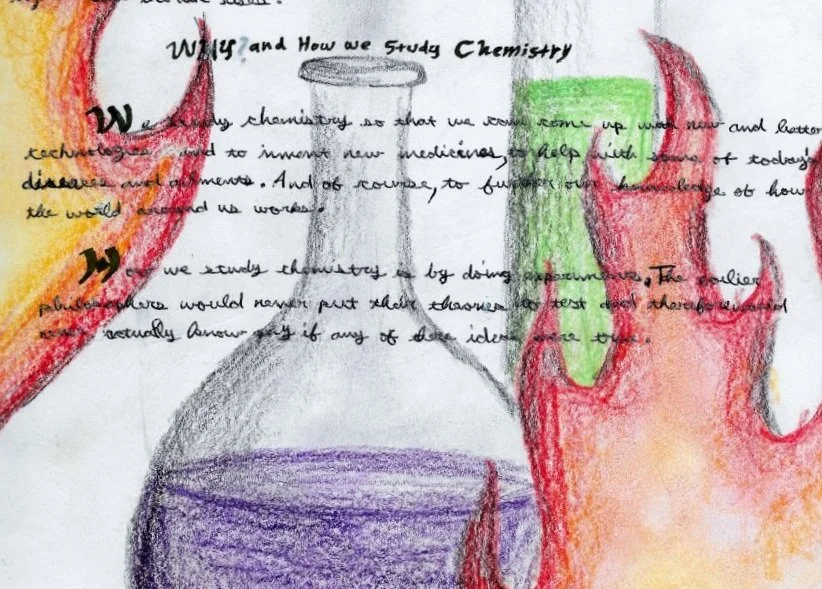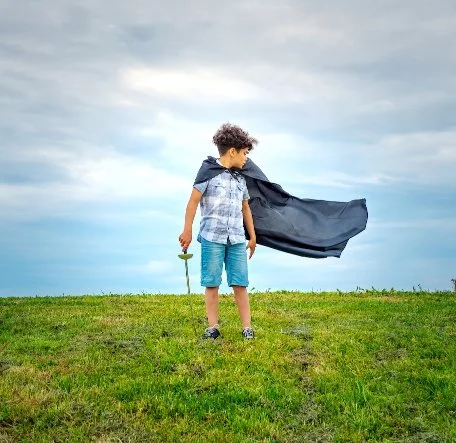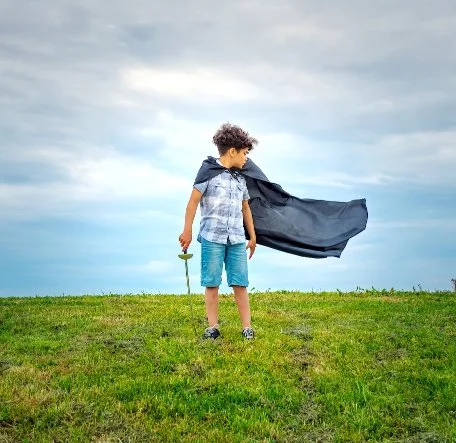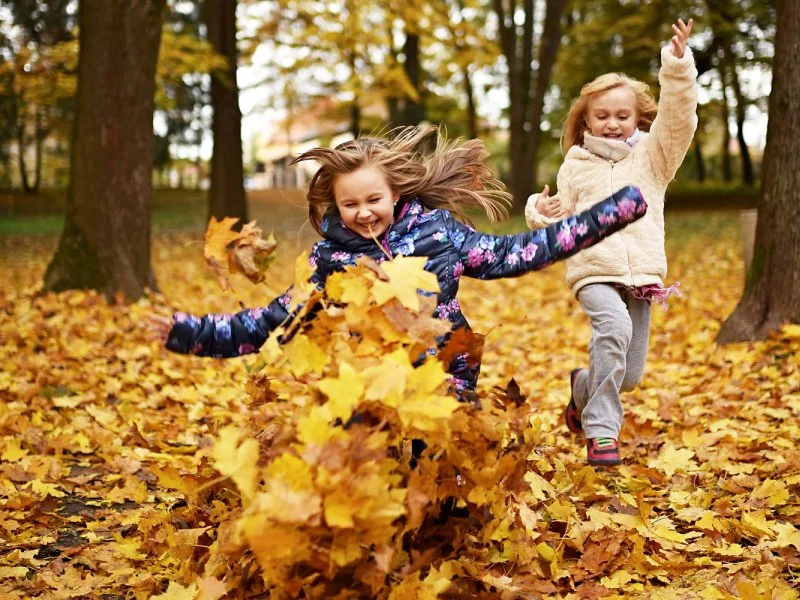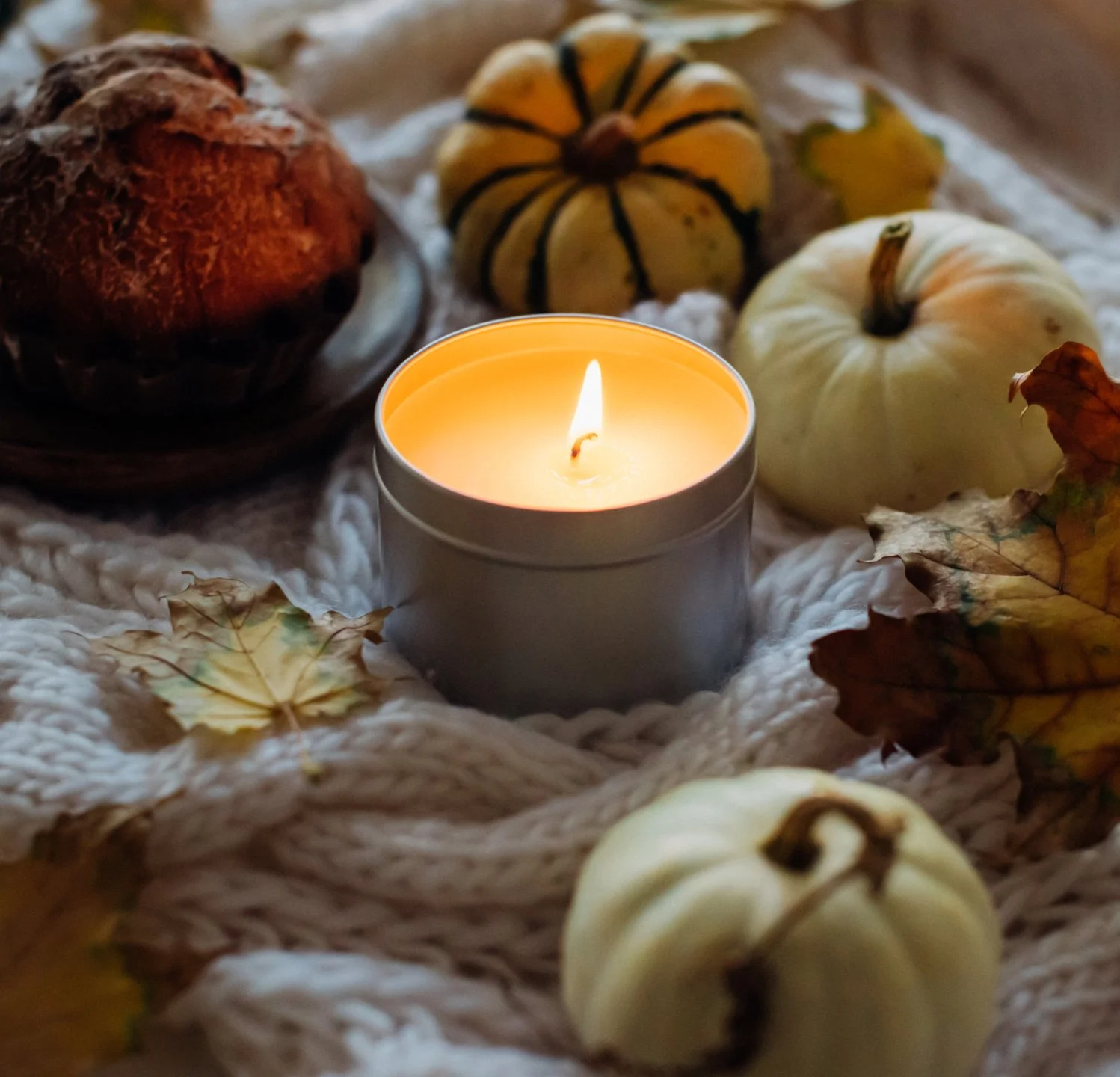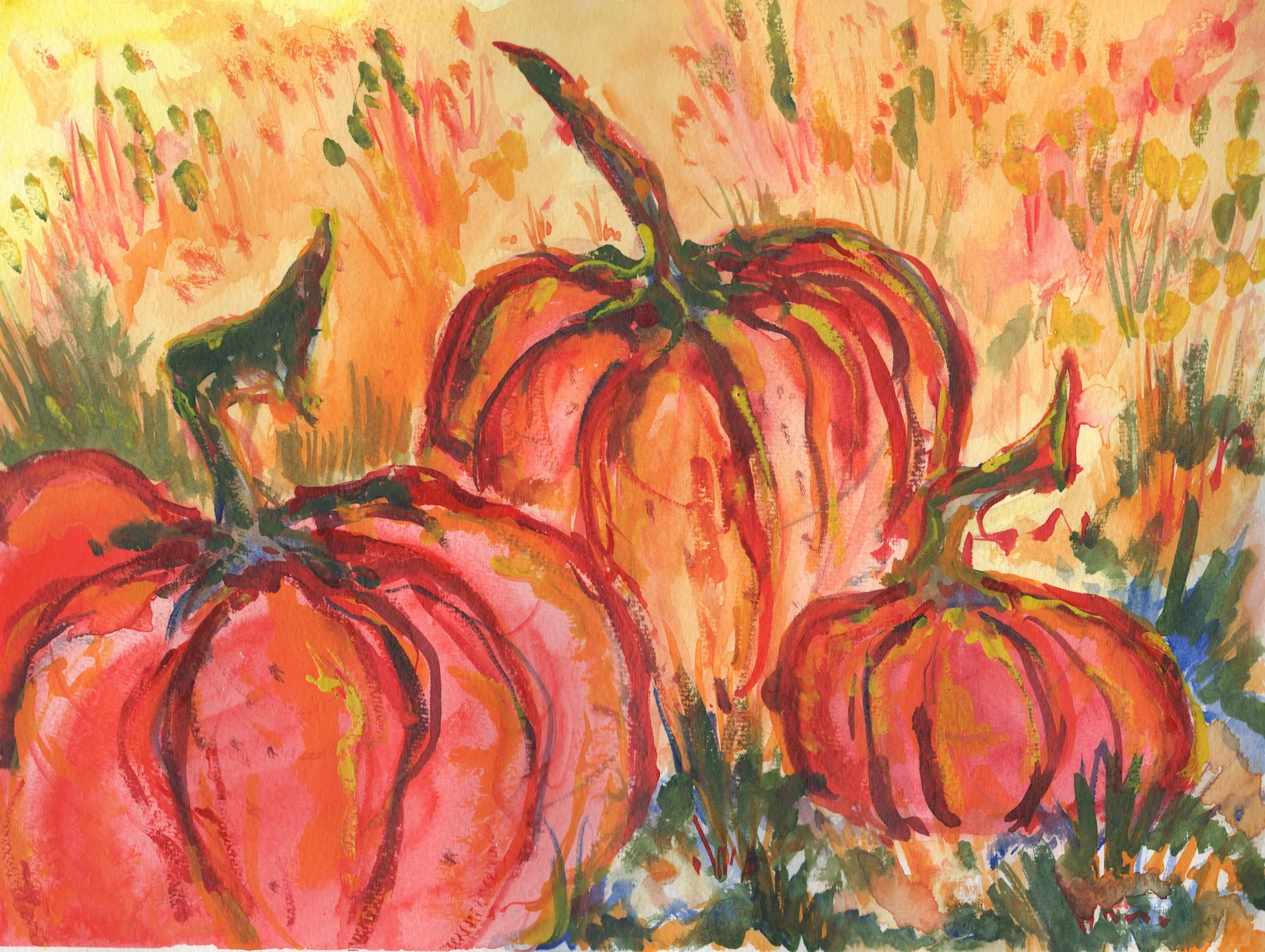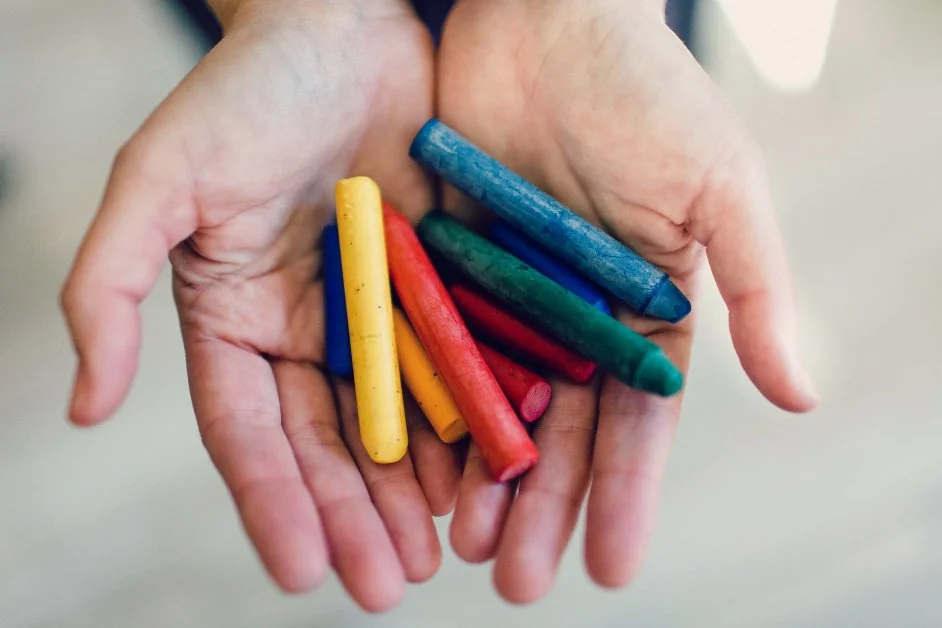
Waldorfish Blog
The Beauty and Challenge of Eighth Grade Geometry
Waldorf eighth grade geometry works with forms from different points of view.
Eighth grade marks the culmination of the middle grades in Waldorf education, and the curriculum is designed to meet students with new levels of challenge - both intellectually and artistically.
In the fifth, sixth, and seventh grades, the Geometry curriculum evolves beautifully: students move from freehand geometric drawing, to using tools to create foundational forms, and then to exploring analytical concepts intertwined with patterns and artistic expression.
By eighth grade, something new and exciting begins - students step into the world of three-dimensional geometry, working with the remarkable Platonic Solids.
These are five perfectly symmetrical 3D shapes - the tetrahedron, cube, octahedron, dodecahedron, and icosahedron - each with its own unique combination of faces, vertices, and edges.
Why Eighth Grade?
At this age, students are ready for new kinds of thinking. Their capacity for abstract reasoning is growing rapidly, and they’re able to hold complex forms and relationships in their minds in a way that wasn’t possible just a year or two earlier.
From the perspective of brain science, this is no coincidence.
Platonic Solids are the focus of Waldorf eighth grade geometry.
During adolescence, the prefrontal cortex - the area of the brain responsible for reasoning, planning, and seeing patterns - undergoes major growth and rewiring. Engaging with geometric concepts like the Platonic Solids helps strengthen these neural pathways through the very process of visualizing, planning, and constructing something that bridges the abstract and the concrete.
Becoming the Mathematician
In eighth grade, the geometry curriculum moves fully into the realm of thinking.
Armed with skill and confidence in the tools of the geometer - and the experience of studying form and proportion in both nature and the human body - students begin to take on the mantle of mathematicians in the truest sense of the word: those who study the underlying forms of all things.
Enter: The Platonic Solids!
Students engage with these shapes on many levels - philosophically, artistically, and mathematically. Plato himself associated each solid with one of the classical elements and the twelve constellations, inspiring students to consider the harmony and order inherent in the universe. They explore the qualities of numbers, the relationships between shapes, and the ways these solids appear in nature - from crystals to flowers to the structure of the human body itself.
Art, Math, and Mind in Motion
As in all Waldorf geometry, art and math work as one.
Students draw the Platonic Solids with compass and straightedge, then design 2D nets to construct 3D models. Through this process, they experience how geometry moves from the abstract to the tangible.
Each step requires spatial reasoning, careful observation, and meticulous craftsmanship - skills that mirror the kind of focused, flexible thinking adolescents are developing neurologically at this stage. This hands-on work not only refines fine motor control but also helps balance the maturing adolescent brain, which thrives when both analytical and artistic processes are engaged together.
Class is in session: A chalk drawing from a Waldorf eighth grade geometry block.
A Classroom Alive with Form
There is no single way to approach the Platonic Solids. Walk into an eighth-grade classroom, and you might see these geometric wonders transformed into mobiles, centerpieces, or softly glowing lanterns. However they appear, they are always the result of deep thought, patience, and a growing sense of inner order.
Looking Beyond What Meets the Eye
By the end of eighth grade, students begin to recognize that there is always more than meets the eye. The geometry curriculum has given them not only tools for measurement and observation, but also for seeing the world as a place of underlying harmony and structure.
Through their study of form - both beautiful and precise - they learn to describe what they can see, and to reason about what exists in the unseen, abstract world of ideas.
About the Authors
Robyn Beaufoy is Waldorfish’s CEO, and also a course instructor for Simple Season, Waldorf Art for Beginners, and Weekly Art Foundations. You’ll find her intuitive touches and influences throughout everything Waldorfish offers. Robyn has been in the world of education for over 25 years, with an MA in Education and a certification in Waldorf teaching - she also homeschooled both of her children for some of that time. In 2012 Robyn co-founded Waldorfish.com, creating it with the vision of making Waldorf inspired-art and pedagogy more accessible, joyful, and doable for homeschoolers all over the world.
Caitlin Amajor is Waldorfish’s course instructor for Geometry grades 5 & 6, Botany, and Geology as well as our Administrative Assistant. From a young age, Caitlin has been immersed in Waldorf education, attending a Waldorf school from K-8. After receiving a BA in History, Caitlin gained her certification in Waldorf teaching, and spent seven years as a Waldorf class teacher in the upper grades. With a special fondness for watercolor painting and geometry, Caitlin loves bringing Waldorf education to her students all over the world, and seeing their own individuality and style bloom from the curriculum!
Waldorf Geology: Adapting the Curriculum to Your Region
In Waldorf education, the curriculum really shines when we adapt it to our local regions.
Use your observation skills and senses to explore geology where you live!
This encourages students not only to connect with the material and the greater concepts, but also to deepen their relationship with the land on which they live.
When we teach through the lens of place, we invite students into a living relationship with their surroundings. This is especially true in the Geology block, where children begin to explore how the Earth was formed, how landforms came to be, and how the very ground beneath our feet tells a story about time and transformation.
In the Waldorf Geology curriculum, we explore many facets of the Earth - the formation of rocks, mountains, and valleys; the work of glaciers and volcanoes; and the long arc of change that shapes the landscape. These are big, sometimes abstract ideas. But when we connect them to what’s right outside our door, they become tangible and meaningful.
Pedagogically, this connection is vital. Around ages 10 to 12, children are moving from an imaginative, story-based way of knowing to a more observational, cause-and-effect understanding of the world. Geology meets this developmental moment beautifully: it offers real-world evidence of forces at work, while still appealing to the child’s sense of wonder.
When students can see, touch, and question the rocks in their own landscape, learning becomes personal.
Here are five simple ways to make the Geology curriculum come alive where you live:
Keep it simple- go outside!
Go on a hike for the day, walk around your neighborhood, and notice the rocks around you. Even landscaping stones, rock walls, or architectural features can become starting points for observation and conversation. Ask: What might this rock have looked like before it was shaped or moved? Where might it have come from?
Go to your local library and explore books about your region.
Even tourist-focused resources may be helpful.
Do some internet research around local mineral, rock or geology clubs.
You may be surprised at how many active groups are nearby!
Go to your town’s local visitor center and explore the history of your town.
See how you can connect the vast world of geology to your region. Remember: Geology is connected to everything! Industrial history, rivers/lakes/water usage, city planning, etc.
Visit a Natural History Museum.
Many museums have geology or rock exhibits that tie local formations into larger geological stories. Seeing specimens up close helps students link their personal observations with the broader scientific picture.
Enjoy exploring the beauty of the natural world, and find geology all around you.
Overall, enjoy weaving the curriculum with where you live, and keep it simple. The act of observing, discussing, and connecting the material to what is around you is one of the most important and valuable activities your student can engage in.
When children experience that the land they live on is part of a great, unfolding story, learning becomes not just academic - it becomes soulful. This is meaningful learning, rooted in place and alive with curiosity.
About the Authors
Robyn Beaufoy is Waldorfish’s CEO, and also a course instructor for Simple Season, Waldorf Art for Beginners, and Weekly Art Foundations. You’ll find her intuitive touches and influences throughout everything Waldorfish offers. Robyn has been in the world of education for over 25 years, with an MA in Education and a certification in Waldorf teaching - she also homeschooled both of her children for some of that time. In 2012 Robyn co-founded Waldorfish.com, creating it with the vision of making Waldorf inspired-art and pedagogy more accessible, joyful, and doable for homeschoolers all over the world.
Caitlin Amajor is Waldorfish’s course instructor for Geometry grades 5 & 6, Botany, and Geology as well as our Administrative Assistant. From a young age, Caitlin has been immersed in Waldorf education, attending a Waldorf school from K-8. After receiving a BA in History, Caitlin gained her certification in Waldorf teaching, and spent seven years as a Waldorf class teacher in the upper grades. With a special fondness for watercolor painting and geometry, Caitlin loves bringing Waldorf education to her students all over the world, and seeing their own individuality and style bloom from the curriculum!
Michaelmas: Meeting the Dragon in Today’s World
Michaelmas inspires us to meet our own dragons.
As the days grow shorter, many Waldorf families turn their attention to Michaelmas.
For those new to the tradition, Michaelmas is a festival celebrated around September 29th, honoring St. Michael, the archangel who brings courage, strength, and the will to do good in the face of challenges.
In Waldorf circles, this festival marks a turning point in the year - a time to gather our inner strength as the outer world moves into darker days. Just as nature shifts toward winter, we too are called to look inward, to ask: What is my dragon, and how will I meet it?
Two Ways of Meeting the Dragon
In stories of St. Michael, the dragon is a central figure, and how we think about the dragon can shape the way we celebrate.
Overcoming the Dragon
Some traditions emphasize Michael as the conqueror of evil. Here, the dragon represents all that is destructive: fear, greed, hatred, selfishness. In this telling, Michael defeats and kills the dragon, freeing the land and people from its shadow. The lesson is about courage - facing darkness directly and not letting it rule over us.
Michaelmas can be a time for transformation and facing challenges.
Transforming the Dragon
Others in the Waldorf community lean toward a gentler perspective: the dragon is not annihilated, but rather subdued and transformed. This view sees the dragon as our inner challenges - anger, laziness, pride, or despair - that can, if harnessed, become forces for good. Instead of banishing the dragon, we bring it into balance, learning self-mastery and compassion.
Both perspectives offer valuable lessons for children (and for adults, too). Sometimes we must confront destructive forces directly, with a firm “no.” Other times, we are called to listen, understand, and work with the dragon, recognizing that within struggle lies the seed of transformation.
Michaelmas Messages for Our World Today
Looking around us this year, it’s not hard to see dragons. They may not be literal beasts with scales and fire, but they show up in many forms. You hardly need me to list them for you, but the writer in me feels compelled to provide examples - here are a few:
Global uncertainty and conflict
Environmental challenges
The pull of fear and division in our communities
Even the overwhelm of modern life
So how can we bring the spirit of Michaelmas into these realities - and into the lives of our children?
Cultivating Courage: Michaelmas reminds us that courage isn’t the absence of fear, but the strength to act even when we’re afraid. Children can learn that bravery doesn’t only mean big heroic deeds; it can also mean telling the truth, being kind when it’s difficult, or trying something new.
Facing Our Own Dragons: Each of us can ask: What dragon am I facing right now? Is it exhaustion, discouragement, or maybe comparison? Naming the dragon is the first step to transforming it.
Working Together: In the stories, Michael doesn’t fight for glory; he acts for the good of the whole community. That’s a message our children deeply need - that our choices and actions ripple outward and can bring light into the world.
Strengthening the Will: Autumn is a time for establishing rhythms - schoolwork, household habits, even seasonal crafts and cooking. Each small act of discipline builds the inner strength that Michaelmas calls forth.
Bringing It Home
Celebrating Michaelmas doesn’t require elaborate pageantry. You might:
Tell or act out a dragon story with younger children.
Bake dragon bread and let the kids “slay” it by pulling it apart.
Take a nature walk, noticing the shift toward autumn, and talk about the courage we can draw from the turning of the year.
Invite older children to reflect on their “dragons” and set an intention for the season ahead.
Michaelmas can inspire reflection for parents and children alike.
Ultimately, Michaelmas is less about what we do and more about what we carry: the will to meet challenges with courage, compassion, and light. In a world that often feels uncertain, the image of Michael standing tall with sword and scales can inspire us all - not to escape the dragons, but to face them, and perhaps even learn from them.
A Reflection for Parents
As we move into this season of Michaelmas, take a quiet moment for yourself:
What “dragon” feels most present in your life right now?
Does it need to be bravely overcome with a firm boundary, or gently transformed with patience and understanding?
How might you model that process for your children in simple, everyday ways?
You may even wish to light a candle one evening after the children are in bed, hold that image of Michael with his sword of courage, and ask yourself: What small act of bravery can I carry into tomorrow?
A Reflection for Children
You might ask your child:
“If you had a dragon living nearby, what do you think it would look like?”
“What dragon do you think lives inside of you? Is it a dragon of fear, or of grumpiness, or maybe of not wanting to try something new?”
“What would it feel like to be brave in front of that dragon?”
“Do you think your dragon needs to be tamed, like a pet, or defeated, like in a knight’s story?”
Encourage your child to draw, tell a story, or act it out - it doesn’t need to be serious or “right.” The goal is to help them imagine courage in a playful way that they can carry into real-life challenges.
About the Author
Robyn Beaufoy is Waldorfish’s CEO, and a course instructor for some of our courses - Waldorf Art for Beginners, Weekly Art Foundations, and Simple Season. You’ll find her intuitive touches and influences throughout everything Waldorfish offers! Robyn has been in the world of education for over 25 years, with an MA in Education and a certification in Waldorf teaching - she also homeschooled both of her children. In 2012 Robyn co-founded Waldorfish.com, creating it with the vision of making Waldorf inspired-art and pedagogy more accessible, joyful, and doable for homeschoolers all over the world.
The Beauty of a Slow Start to the School Year
The new school year is an exciting, and sometimes overwhelming, time of year.
The Beauty of a Slow Start
When we think of the “first day of school,” many of us picture sharpened pencils, crisp notebooks, and a flurry of lessons and activities packed into the schedule. It’s exciting!
But if we’re honest, it can also feel a bit like going from lounging in a hammock to suddenly running a marathon - without so much as a stretch in between.
And that’s not just true for our children. As parents, we feel the weight of this seasonal shift too. Our kids are learning to release the rhythms of summer while stepping into new ones, and at the same time, we’re holding the invisible threads - schedules, meals, moods, energy levels - while also trying to find our own rhythm again. It’s a lot. It’s hard. And, you’re not doing anything wrong.
That’s why I’ve always loved the idea of a slow start to the school year. Rather than jumping straight into a full load of lessons and activities on day one, we give ourselves (and our children) space to ease in. This approach isn’t just kinder to everyone’s nerves - it also happens to align beautifully with both Waldorf rhythms and modern science.
How can you make your daily routine a bit more gentle?
Why Gentle Transitions Support the Nervous System
Transitions are tricky. Even happy changes -like beginning a new grade - ask our nervous systems to adjust. When we add too many changes at once, children (and parents!) can slip into “fight or flight” mode, which is not exactly the best state for joyful learning.
By starting slowly - adding one or two elements at a time - we give the nervous system a chance to stay regulated. Children feel secure, parents feel less frazzled, and the household atmosphere stays more harmonious. (And let’s be honest: fewer meltdowns are always a win.)
Research tells us that habits stick best when introduced gradually. Instead of overhauling everything on One Big Monday Morning, layering in small changes helps new rhythms take root.
A Waldorf Perspective on Rhythm
In Waldorf education, rhythm is central. Breathing in and breathing out, balancing activity with rest, honoring the flow of the seasons - all of this creates a sense of steadiness for children.
Taking time to transition is healthy for the whole family.
A slow start to the school year mirrors this wisdom. We don’t need to hit the gas right away. Instead, we can begin with simple songs, a morning walk, or a story to set the tone. Lessons and projects can be layered in gradually, like brushstrokes in a painting.
And just as autumn ripens slowly, the festival of Michaelmas at the end of September often feels like a natural settling point. By then, many families discover that their rhythm has gently rooted itself - just in time to celebrate courage and strength in the turning of the year.
Practical Tips for a Slow Start
Here are a few ideas to make this approach simple and doable:
Week 1: Focus on rhythm. Establish your morning circle, enjoy stories, and reconnect with your learning space. Keep lessons light and playful.
Week 2: Add one main lesson subject or block. Keep afternoons simple with nature walks, handwork, or drawing.
Week 3: Gradually layer in more lessons/activities, while keeping an eye on how everyone is adjusting. Flexibility is your friend.
Week 4: Notice how much you’ve already established without the stress of a “big bang” start. Celebrate progress - and maybe bake some bread while you’re at it (bonus points if it’s dragon-shaped for Michaelmas ;)
Parents Benefit Too
We often talk about children’s needs, but parents also have nervous systems that crave gentleness. A slow start gives us space to shift gears - because honestly, the end-of-summer transition can feel bumpy no matter how long we’ve been at this. Easing into the year reduces stress and helps us sustain energy for the long haul. And it reminds our children, by example, that growing into new rhythms is something we all do together, one step at a time.
Slowing down builds a strong foundation- you’ve got this!
A Final Word of Encouragement
If you’re worried that a slow start might end up feeling like you’re “behind” in some way - let me reassure you: you’re not. You’re actually laying a stronger foundation for the months to come. The school year is long, and what matters most is creating rhythms that nourish your family rather than drain it.
This seasonal transition is challenging for everyone - kids and parents alike - but just as we’ve done in other times of change, we’ll gradually settle into steadier days and familiar rhythms.
So this September, consider giving yourself permission to slow down. Notice how the seasonal shift happens little by little, not all at once. Your homeschool year can unfold the same way - with steadiness, warmth, and maybe even a little more joy.
(And if anyone asks why you’re taking things slowly, just smile and say you’re giving your family the gift of nervous system regulation. That’ll either impress them… or end the conversation quickly. Win-win ;)
About the Author
Robyn Beaufoy is Waldorfish’s CEO, and a course instructor for some of our courses - Waldorf Art for Beginners, Weekly Art Foundations, and Simple Season. You’ll find her intuitive touches and influences throughout everything Waldorfish offers! Robyn has been in the world of education for over 25 years, with an MA in Education and a certification in Waldorf teaching - she also homeschooled both of her children. In 2012 Robyn co-founded Waldorfish.com, creating it with the vision of making Waldorf inspired-art and pedagogy more accessible, joyful, and doable for homeschoolers all over the world.
Looking for something?
Welcome to Waldorfish! We started this adventure in 2012 out of a desire to make Waldorf training more accessible to class teachers in remote locations and to homeschooling families everywhere! Read more, click here.
WE WON! Our Weekly Art courses were voted “best interactive art program.” Learn more about the award, here.
A few of our most popular blog posts:
